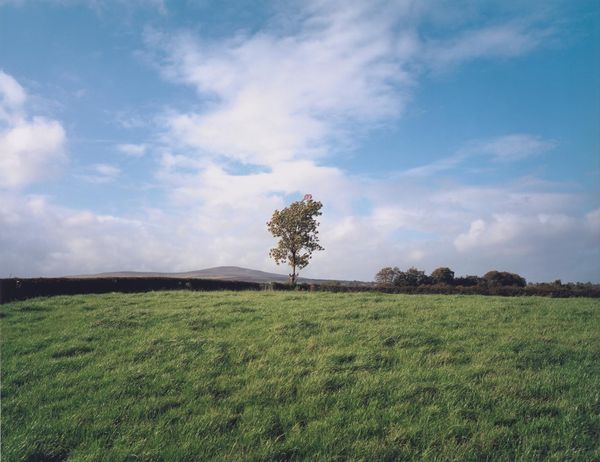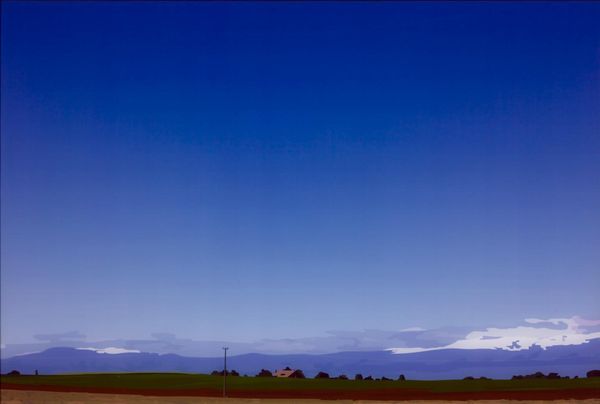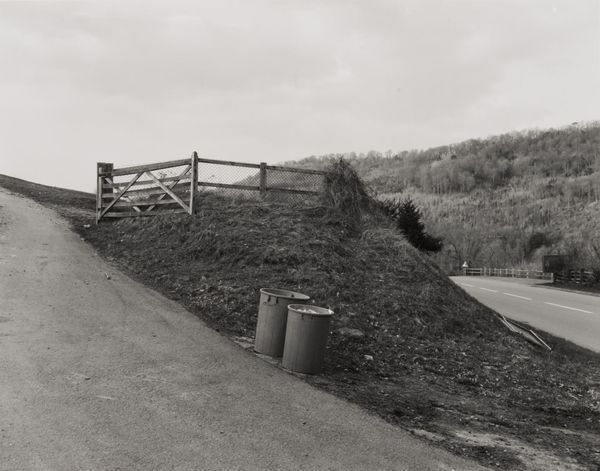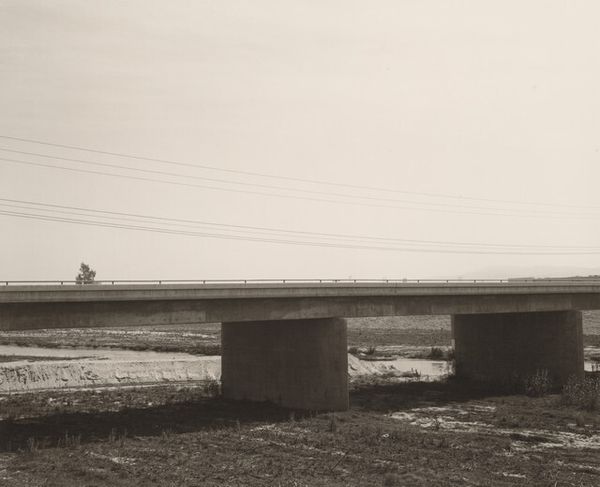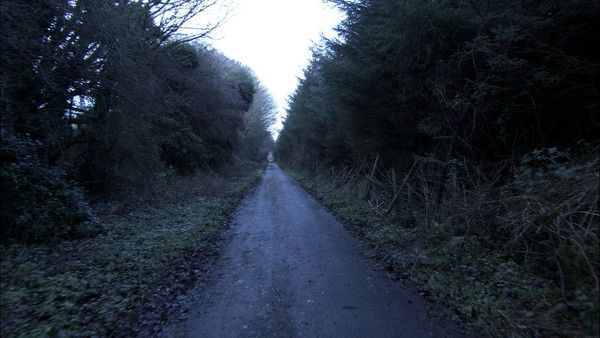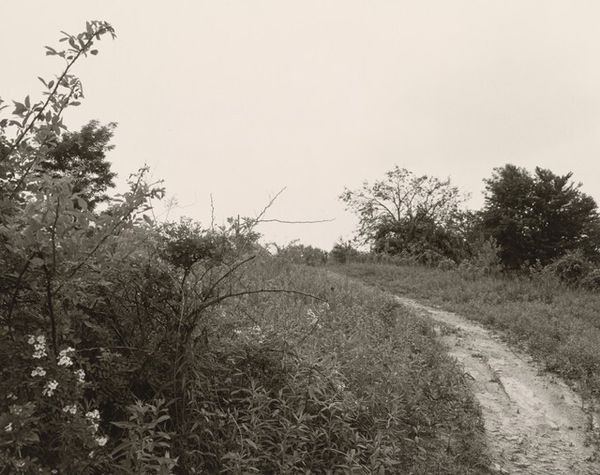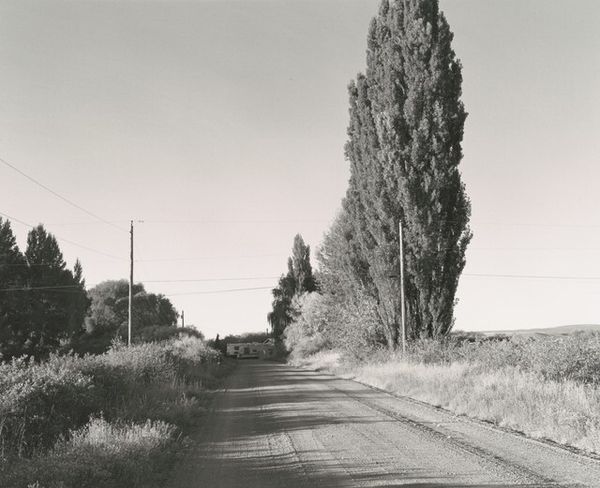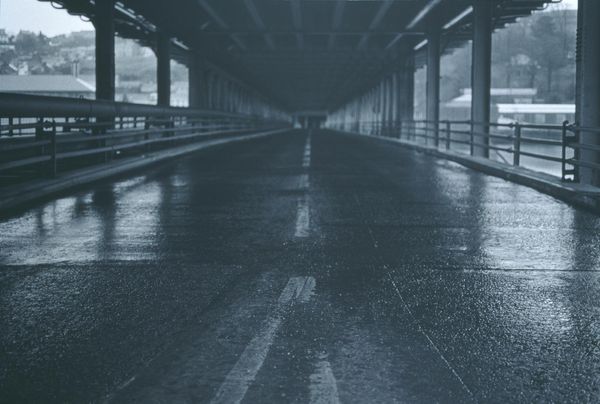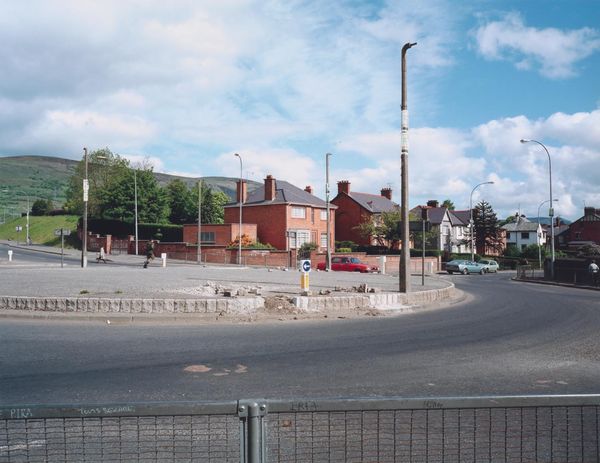
Dimensions: support: 680 x 880 mm
Copyright: © Paul Graham; courtesy Pace and Pace/MacGill Gallery, New York | CC-BY-NC-ND 4.0 DEED, Photo: Tate
Editor: This photograph, "Graffiti on Motorway Sign, Belfast" by Paul Graham, presents a rather bleak roadside scene. What strikes me is the contrast between the mundane landscape and the implied social commentary. How do you interpret this work? Curator: I see a landscape charged with unspoken narratives. Graham's focus on the everyday normalizes the backdrop of the Troubles, implicating the viewer. The graffiti becomes a quiet act of resistance, a claiming of space. What does it mean to inscribe oneself on a landscape already fraught with division? Editor: So, the banality is almost a subversive element? Curator: Precisely. By not sensationalizing, Graham encourages us to consider the subtle ways power dynamics manifest. It's a poignant reflection on identity and place. Editor: That gives me a lot to think about. Thanks! Curator: Indeed, art can be a powerful tool for understanding ourselves and the world around us.
Comments
tate 8 months ago
⋮
http://www.tate.org.uk/art/artworks/graham-graffiti-on-motorway-sign-belfast-p79339
Join the conversation
Join millions of artists and users on Artera today and experience the ultimate creative platform.
tate 8 months ago
⋮
Graffiti on Motorway Sign, Belfast is a colour photograph on paper. The image was shot by the artist in Northern Ireland in the mid-1980s as part of a group of work collectively entitled Troubled Land. It was subsequently reprinted by the artist in the mid-1990s in an edition of ten, plus two artist’s proofs, on Fuji paper and previous versions were destroyed, as he explained in a letter of July 2007 to his London gallerist Anthony Reynolds:
